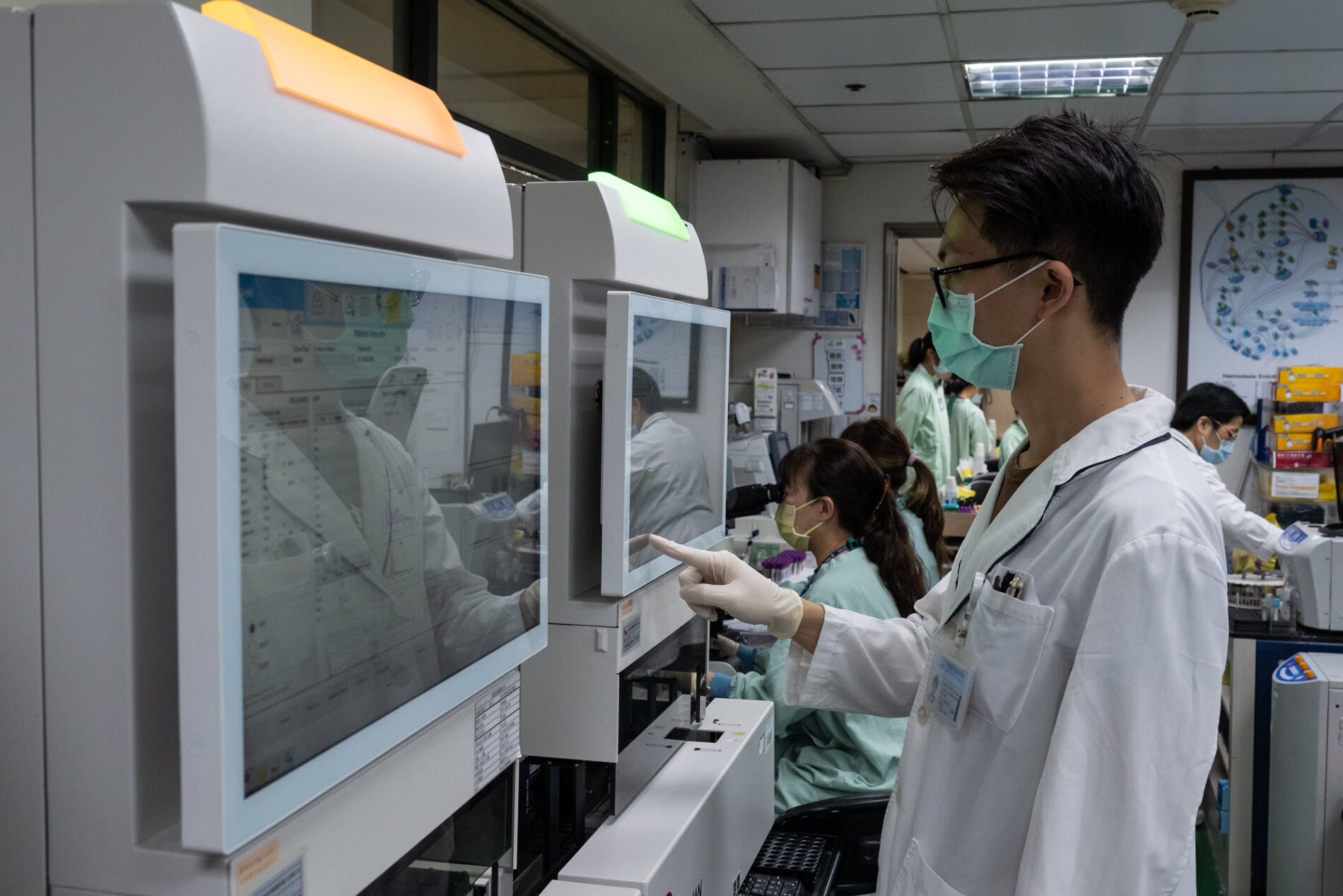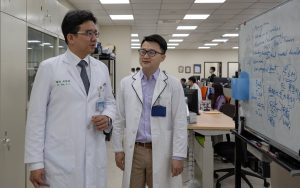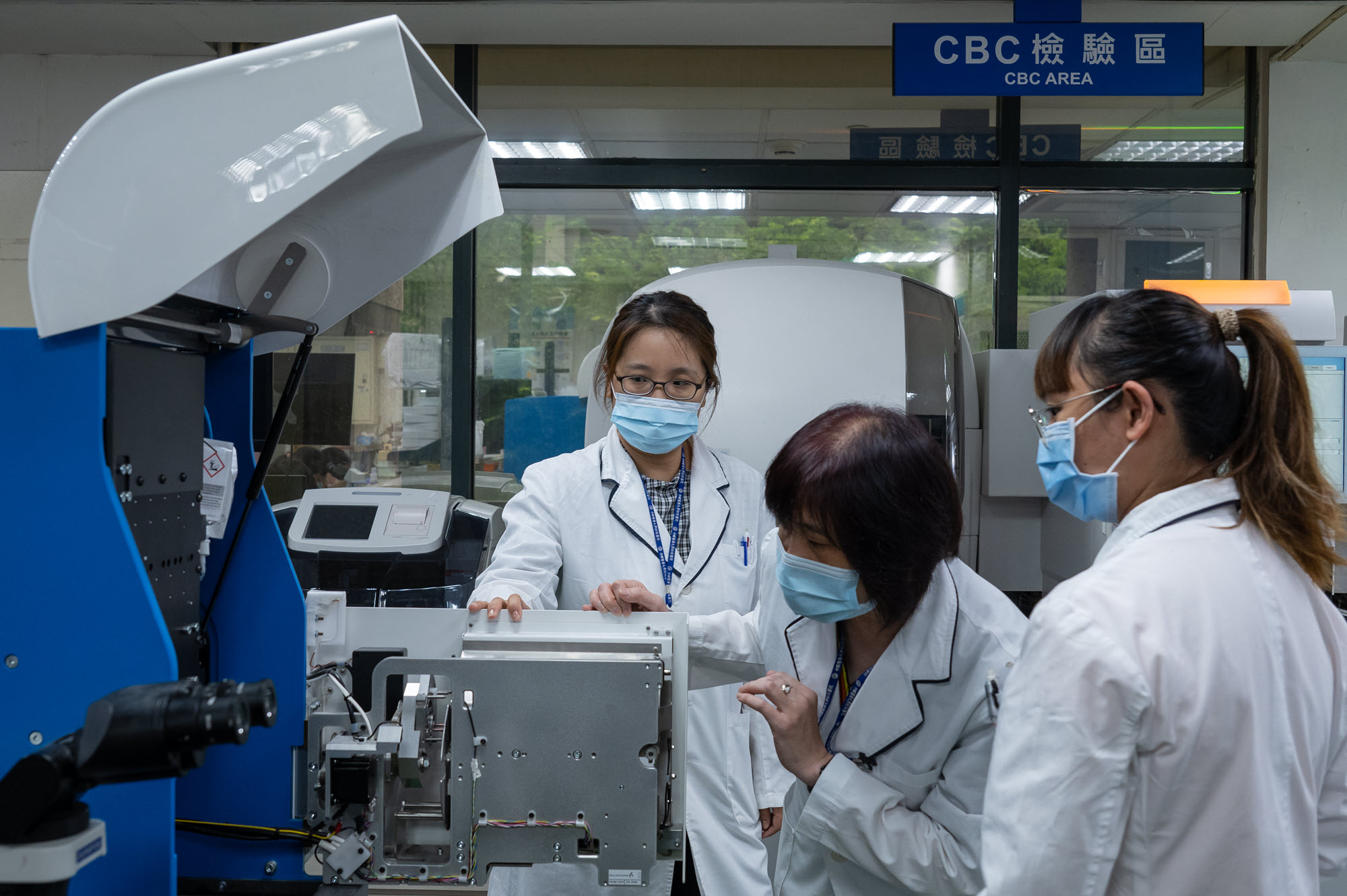
Inside Taiwan’s ‘AI hospital of the future’
The telltale signs of infection appeared soon after the patient arrived in the emergency room. So doctors at China Medical University Hospital (CMUH) ordered a lab test to identify the culprit.
Three days later, they got their answer: a drug-resistant bacteria. This particular bug had evolved to outfox most antibiotics, even ones used as a last resort. It is a notorious and potentially fatal threat that haunts hospitals worldwide.
But by then the patient was about to be discharged. That’s because an AI model developed by CMUH had already identified the bacteria – in one hour, compared with the 72 hours the standard lab test took. Doctors had prescribed new drugs as a result, and the patient recovered.
That AI model is a key pillar of CMUH’s “intelligent antimicrobial system,” which was deployed into clinical practice last year. Since then, CMUH has seen patient mortality fall by 25%, antibiotic costs by 30% and antibiotic use by 50%. It has helped doctors treat thousands of patients much like the one who left the ER in March.

And it is just one example of how CMUH is using AI to create a new era of healthcare, said Dr. Kai-Cheng Hsu, director of CMUH’s Artificial Intelligence Center for Medical Diagnosis.
CMUH has developed and deployed hundreds of AI algorithms, hosted on Microsoft’s Azure cloud platform, that are used every day across the system’s 12 hospitals. The team’s custom-built AI models are helping doctors diagnose diseases like cancer and Parkinson’s. They’re helping ER staff treat stroke and heart attack patients quicker. And they’re helping ease the paperwork load on doctors and nurses.
“The major goals of every AI tool we develop are to save patients’ lives and save doctors’ time,” Hsu said. “Our vision is to be a world-class platform provider for the AI hospital of the future.”
Saving time, saving lives
CMUH has been laying the foundations for that AI hospital for years. In 2015, the system established a center for big data, which could ensure patient data privacy while supplying training fuel for AI algorithms. The AI Center for Medical Diagnosis launched two years later.

Today, 10 different AI clinics operate at CMUH. A cross-disciplinary team of doctors and AI researchers meet monthly to discuss potential new projects and review progress on existing research. Models that are successfully validated and tested are integrated into clinical practice. To date, eight of its AI models have received regulatory approval from Taiwan’s Food and Drug Administration, and eight more have been submitted for review.
All have been developed and deployed using the Azure Machine Learning platform.
“Azure is at the core of our digital healthcare transformation,” said Dr. Jiaxin Yu, director of CMUH’s AI Innovation Center. “The platform lets us quickly develop new AI tools, deploy them into the clinic and improve the daily practice of our physicians.”
The AI models are often incorporated into familiar software doctors use every day. Some are deployed with a literal push of a button. For example, doctors who order an MRI on a knee injury can click a button marked “AI” that predicts the likelihood of a meniscus tear. That instant result can avoid delays for a follow-up appointment and get a patient treated quicker.
Saving time often means saving lives. That is increasingly true when it comes to the rapid identification of deadly, drug-resistant bacteria. The World Health Organization predicts that by 2050, antibiotic resistance will cause more deaths than cancer.
But as the patient with drug-resistant bacteria found, the standard lab method can take up to three days. So CMUH developed a new model. It combined machine learning with a common and much simpler lab technique that identifies molecular fingerprints of different bacterial strains. Data on thousands of clinical samples were used to train the algorithm, which can accurately identify six different types of multi-drug resistant bacteria in one hour, Yu said.
With possible heart attack patients, critical care can be delayed while waiting for a specialist to review an electrocardiogram (ECG), Hsu said. CMUH developed an algorithm that can analyze ECGs, detect the likelihood of a heart attack and send a message to an on-duty specialist for confirmation.
CMUH emergency room staff have used the AI model for two years. It has cut in half the time between when a patient arrives and when they are treated, Hsu said. The algorithm was so successful they decided to partner with a medical device manufacturer to bring it into ambulances as an early warning system.

Fire departments in the cities of Taichung and Nantou have used the system for nearly a year, Hsu said. An ECG can be taken in an ambulance and then uploaded to the cloud, where the AI model can help with a diagnosis and alert medical teams at the hospital to prepare for a heart attack patient. This can cut the time between symptom onset and the start of treatment from two hours down to 10 minutes, he said.
Not all AI models have been as successful, Hsu and Yu said.
CMUH developed an algorithm to predict sepsis, a serious illness triggered by infection. Many patients with sepsis show signs of organ failure. When the AI model was trained, it learned to correlate those symptoms with the illness. But not all patients with organ failure have sepsis. As a result, the model incorrectly flagged some patients with organ failure as having sepsis. To solve the problem, Yu said, the team could train future models with additional labels to help it distinguish cases where organ failure is not caused by infection.
Hsu and Yu noted that doctors have always had to make complex decisions using the data they had. AI is there to help support those decisions by providing deeper insights into data, not to make decisions best left to medical experts.
Based on CMUH’s journey, AI can help improve the care doctors deliver, they said. That is why CMUH hopes to share its AI tools broadly using the Azure platform.
“We want to deploy our AI models to hospitals and clinics around the world, and it is much more efficient and cost-effective to use a cloud platform,” Yu said. “Patient privacy is always a top concern, and a critical reason we chose Azure is because it can ensure the safety of sensitive health data. Azure really reduces the barriers to bringing AI into the hospital.”
Related:
Read CMUH’s peer-reviewed research on using AI to detect heart attacks, spot blocked arteries in the brain and identify drug-resistant microbes.
Top image: Medical staff at China Medical University Hospital in Taichung, Taiwan, are using AI to predict patients’ need for antibiotics and other medicines, some of the hundreds of AI algorithms that are used every day across the system’s 12 hospitals. Photo by Billy H.C. Kwok for Microsoft.
